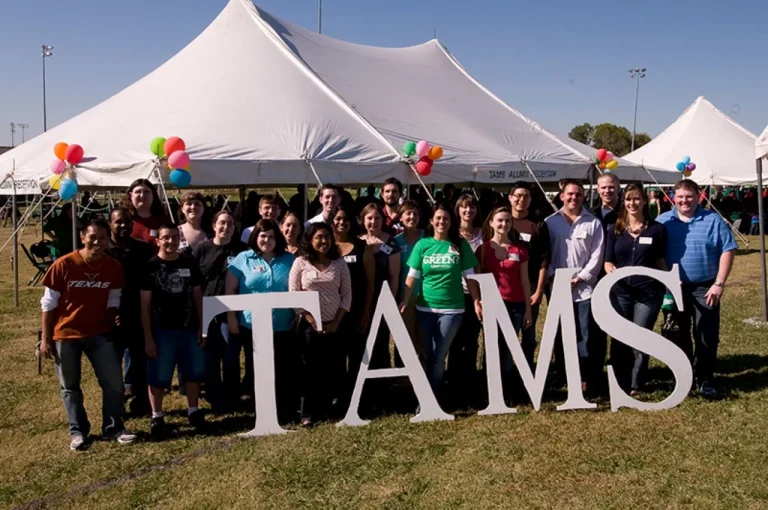What Is Dsa In Computer Science?
DSA or Data Structures and Algorithms form the fundamental building blocks of computer programming. If you’re short on time, here’s a quick answer: DSA refers to the key mathematical and organizational structures like arrays, linked lists, trees, graphs as well as techniques like recursion, sorting/searching used to design efficient and optimized computer programs.
In this comprehensive guide, we explain what DSA is, why it is important in computer science, and provide an overview of the major data structures and algorithms concepts covered in this field.
Understanding Data Structures
Data Structures and Algorithms (DSA) is a fundamental concept in computer science. It involves the organization, management, and storage of data in a way that enables efficient access and manipulation.
Data structures are essential for solving complex problems and optimizing the performance of software applications. In this article, we will explore some of the most common data structures used in computer science.
Arrays
An array is a collection of elements that are stored in contiguous memory locations. It is one of the simplest and most widely used data structures. Arrays allow efficient access to individual elements using an index.
They are used to store homogeneous data types such as integers, characters, or floating-point numbers. Arrays are fixed in size and have a constant time complexity for accessing elements.
Linked Lists
A linked list is a dynamic data structure that consists of a sequence of nodes, where each node contains a value and a reference to the next node in the sequence. Unlike arrays, linked lists can grow or shrink in size at runtime.
Linked lists are particularly useful when the size of the data is unknown or constantly changing. They have a time complexity of O(1) for inserting or deleting elements at the beginning or end of the list.
Stacks
A stack is a last-in, first-out (LIFO) data structure. Elements can only be added or removed from the top of the stack. Stacks are used to implement algorithms that require backtracking or keeping track of nested function calls. They are also used in compiler design and expression evaluation.
Stacks can be implemented using arrays or linked lists.
Queues
A queue is a first-in, first-out (FIFO) data structure. Elements are added to the back of the queue and removed from the front. Queues are commonly used in scheduling algorithms, breadth-first search, and simulations. They can be implemented using arrays or linked lists.
Trees
Trees are hierarchical data structures consisting of nodes connected by edges. Each node can have zero or more child nodes. Trees are used to represent hierarchical relationships, such as file systems, organization charts, or family trees.
Binary trees are the most common type of trees, where each node has at most two child nodes.
Graphs
Graphs are a collection of nodes (vertices) connected by edges. They are used to represent relationships between objects, such as social networks, transportation networks, or computer networks. Graphs can be directed or undirected, weighted or unweighted.
They are a fundamental data structure in graph algorithms, such as breadth-first search, depth-first search, and shortest path algorithms.
Hash Tables
A hash table is a data structure that maps keys to values using a hash function. It provides efficient insertion, deletion, and retrieval of elements. Hash tables are used to implement associative arrays, databases, caches, and symbol tables.
They have an average time complexity of O(1) for search, insert, and delete operations.
Understanding data structures is crucial for any computer scientist or software engineer. They provide the foundation for efficient algorithm design and problem-solving. To learn more about data structures and algorithms, you can visit websites like GeeksforGeeks or TutorialsPoint that provide comprehensive tutorials and examples.
Types of Algorithms
Searching Algorithms
Searching algorithms are used to find a specific element or a set of elements within a given data structure. They are commonly used in applications such as search engines, databases, and recommendation systems. Popular searching algorithms include linear search, binary search, and hash-based search.
These algorithms have different time complexities and are chosen based on the specific requirements of the problem at hand.
Sorting Algorithms
Sorting algorithms are used to arrange elements in a specific order, typically in ascending or descending order. They are widely used in various applications such as data analysis, database management, and information retrieval.
Some commonly used sorting algorithms include bubble sort, insertion sort, selection sort, merge sort, and quicksort. Each algorithm has its own advantages and disadvantages in terms of time and space complexity.
Graph Algorithms
Graph algorithms are used to solve problems related to graphs, which are a collection of nodes (vertices) connected by edges. These algorithms are widely used in network optimization, transportation planning, and social network analysis.
Some popular graph algorithms include breadth-first search (BFS), depth-first search (DFS), Dijkstra’s algorithm, and Kruskal’s algorithm. These algorithms help in finding the shortest path, detecting cycles, and determining the connectivity of a graph.
Greedy Algorithms
Greedy algorithms are a class of algorithms that make locally optimal choices at each step with the hope of finding a global optimum. They are often used in optimization problems where the goal is to find the best possible solution.
Examples of greedy algorithms include the knapsack problem, the traveling salesman problem, and the minimum spanning tree problem. These algorithms may not always guarantee the optimal solution, but they are efficient and easy to implement.
Divide and Conquer
Divide and conquer is a problem-solving technique where a problem is divided into smaller subproblems, which are then solved independently. The solutions to the subproblems are then combined to solve the original problem.
This technique is commonly used in algorithms such as merge sort, quicksort, and binary search. Divide and conquer algorithms are known for their efficiency and are widely used in various applications.
Dynamic Programming
Dynamic programming is a method for solving complex problems by breaking them down into simpler overlapping subproblems. The solutions to these subproblems are stored and reused to solve larger problems. This technique is particularly useful when the same subproblems need to be solved multiple times.
Dynamic programming is commonly used in algorithms such as the Fibonacci sequence, the knapsack problem, and the longest common subsequence problem.
Backtracking
Backtracking is a technique used to find solutions to problems by exploring all possible paths and backtracking when a solution is not possible. It is commonly used in problems that involve searching for a solution in a large solution space.
Examples of problems that can be solved using backtracking include the N-Queens problem, Sudoku, and the Hamiltonian cycle problem. Backtracking algorithms can be computationally expensive, but they guarantee finding a solution if one exists.
Mathematical Foundations
In computer science, mathematical foundations play a crucial role in understanding and analyzing algorithms and data structures. By applying mathematical concepts and principles, computer scientists can evaluate the efficiency and effectiveness of various computational processes.
This section will explore some of the key mathematical foundations used in the field of computer science.
Time and Space Complexity
Time and space complexity are fundamental concepts in computer science that help measure the efficiency of an algorithm. Time complexity refers to the amount of time an algorithm takes to run as a function of the input size, while space complexity refers to the amount of memory or storage an algorithm requires.
These measures are important for determining the scalability and performance of algorithms, and understanding how they will perform as the input size grows.
Big O Notation
Big O notation is a mathematical notation used to describe the upper bound or worst-case scenario of an algorithm’s time or space complexity. It provides a standardized way to compare the efficiency of different algorithms.
For example, if an algorithm has a time complexity of O(n), it means that the running time of the algorithm grows linearly with the input size. On the other hand, if an algorithm has a time complexity of O(n^2), it means that the running time grows quadratically with the input size.
Big O notation allows computer scientists to analyze and compare algorithms without getting bogged down in specific implementation details.
Recursion
Recursion is a mathematical concept that is widely used in computer science. It refers to the process of solving a problem by breaking it down into smaller instances of the same problem. In programming, recursive functions call themselves within their own definition, allowing them to solve complex problems by reducing them to simpler subproblems.
Recursion is particularly useful when dealing with problems that can be naturally divided into smaller, identical subproblems. However, it is important to ensure that recursive functions have a well-defined base case to prevent infinite recursion.
By understanding the principles of recursion, computer scientists can develop elegant and efficient solutions to a wide range of problems.
For more in-depth information on mathematical foundations in computer science, you can visit https://www.cs.cmu.edu/~fp/courses/15213-s07/schedule.html or https://www.topcoder.com/thrive/articles/Understanding%20Recursion%20and%20Backtracking.
Applications of DSA
Database Systems
DSA (Data Structures and Algorithms) play a crucial role in the development and optimization of database systems. They provide efficient ways to store, retrieve, and manipulate data in databases. For example, techniques like hashing and indexing, which are based on data structures, are used to improve the performance of database operations such as searching, sorting, and joining.
DSA also helps in designing efficient data models and query optimization algorithms, making databases more reliable and scalable.
Network Protocols
DSA is extensively used in the design and implementation of network protocols. Protocols like TCP/IP rely on efficient data structures and algorithms to ensure reliable and secure communication over computer networks.
For instance, data structures like queues and stacks are employed to handle network packets, while algorithms like routing and congestion control algorithms are used to optimize data transfer. Without the use of DSA, network protocols would struggle to deliver data efficiently and effectively.
Compiler Design
DSA has a significant impact on the field of compiler design. Compilers are responsible for translating high-level programming languages into machine code that can be executed by a computer. Data structures such as symbol tables, syntax trees, and symbol tables are crucial components of a compiler.
Algorithms like lexical analysis, parsing, and code optimization heavily rely on efficient data structures and algorithms to generate optimized and error-free code. DSA plays a vital role in ensuring the correct and efficient functioning of compilers.
Graphics Algorithms
DSA is essential in the field of computer graphics as it enables the creation and manipulation of visual images. Data structures like matrices, graphs, and trees are used to represent and transform objects in computer graphics.
Algorithms like line drawing, rasterization, and shading are employed to render images efficiently. DSA provides the foundation for creating visually appealing and interactive graphics applications.
Artificial Intelligence
DSA is at the core of many artificial intelligence (AI) algorithms and techniques. AI involves simulating human intelligence in machines, and DSA enables efficient processing and manipulation of large datasets.
Data structures like graphs and trees are used to represent knowledge and relationships in AI systems. Algorithms like search, optimization, and machine learning rely heavily on DSA to make intelligent decisions and predictions.
The combination of DSA and AI has led to significant advancements in fields such as natural language processing, computer vision, and robotics.
Sources:
- GeeksforGeeks – Applications of Data Structures
- TutorialsPoint – Applications of Data Structures and Algorithms
Importance of Learning DSA
Learning Data Structures and Algorithms (DSA) is essential for computer science students and professionals alike. DSA forms the backbone of efficient programming and problem-solving techniques, allowing developers to write optimized code that can handle large amounts of data and complex operations.
1. Efficient Problem Solving
DSA provides a systematic approach to problem-solving. By understanding various data structures such as arrays, linked lists, stacks, queues, trees, and graphs, along with algorithms like sorting, searching, and traversal, programmers can develop efficient solutions to real-world problems.
DSA helps in breaking down complex problems into smaller, manageable components, making it easier to devise effective solutions.
2. Optimized Code
Efficiency is crucial in software development. DSA enables programmers to write optimized code that minimizes memory usage and execution time. For example, using the right data structure for a particular scenario can dramatically improve the performance of an algorithm.
By learning DSA, developers can make informed decisions about choosing the most appropriate data structure and algorithm for a given problem, resulting in faster and more efficient code.
3. Interview Performance
DSA is a fundamental topic in technical interviews for software engineering positions. Employers often assess a candidate’s problem-solving skills and ability to write efficient code using DSA concepts.
A strong foundation in DSA can greatly enhance one’s chances of performing well in job interviews and securing a desirable position in the industry.
4. Career Advancement
Proficiency in DSA opens up numerous opportunities for career advancement. Companies value programmers who can handle complex data structures and algorithms, as they are essential for building scalable and high-performance applications.
By mastering DSA, individuals can stand out in the competitive job market and increase their chances of landing lucrative job offers and promotions.
Conclusion
DSA provides the key knowledge required for efficiently storing, accessing, modifying and analyzing data to design optimized software solutions. Mastering data structures and algorithms is crucial for successfully programming and problem solving in computer science roles.







